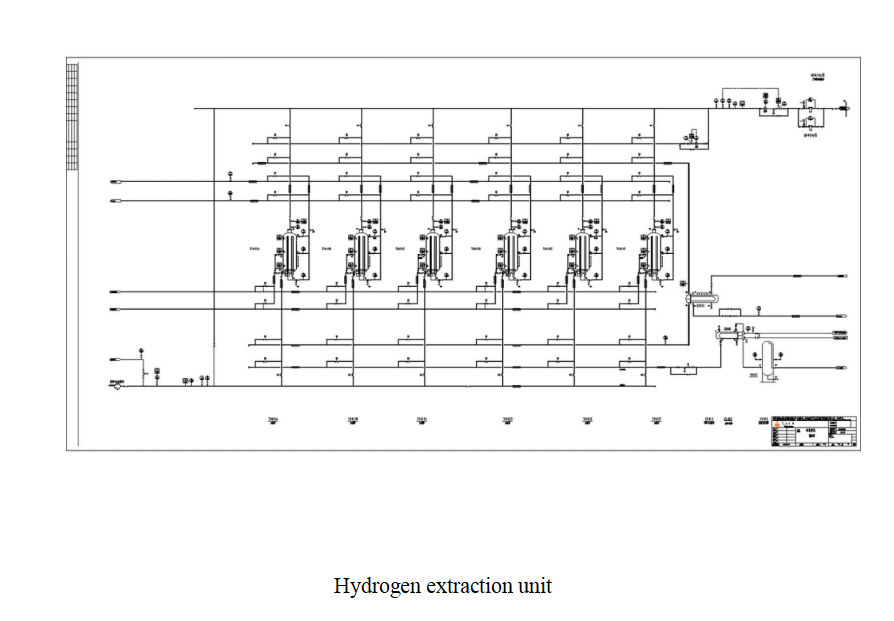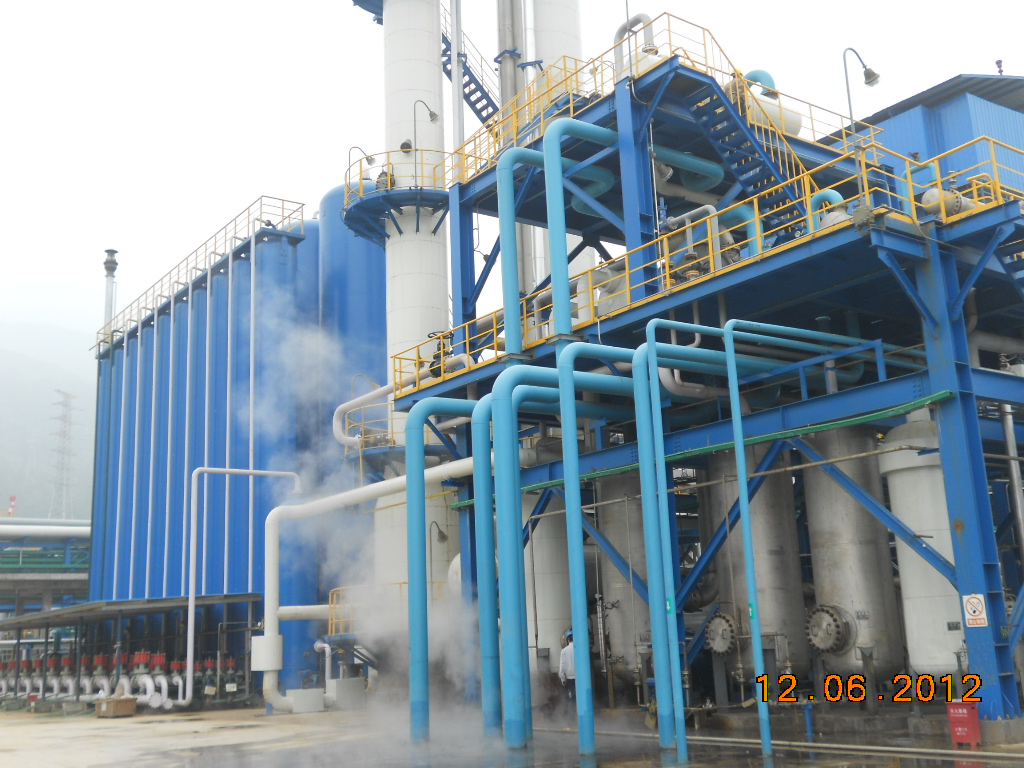Sichuan Techairs Co., Ltd |
|
Verified Suppliers
|
|
Automatic Polysilicon Tail Gas Recycle 20000Nm3/H Exhaust Gas Purification
Automation 20000Nm³/H Exhaust gas purification Polysilicon Tail Gas Recycle
Description:
A number of front-stage distillation and back-stage hydrogen extraction patented technology is adopted, and the technology is coupled, and the HCL and chlorosilane are recovered from polycrystalline silicon exhaust for the whole units. The chlorosilane can be adopted as raw material and the gas purity of products can exceed 99.999%.
Process description
In order to ensure the continuous and stable operation of the device, a group of 6 adsorption towers were used to treat the feed gas. There are always two adsorption towers in the adsorption stage, and the other four adsorption towers are in the regeneration stage.
The exhaust gas pressure of CDI workshop from the user ~1.89mpa enters TSA purification unit for adsorption and purification. The impurities (hydrogen chloride and chlorosilane) easily adsorbed in the gas are absorbed in the adsorbent, and the hydrogen that is not easily absorbed is output to the user after pressure regulation.
After the adsorbent is saturated, the adsorption tower is switched to the feed adsorption tower. After the reverse discharge and pressure reduction, temperature rise analysis, cooling and pressure rise, the adsorption tower completes the preparation before the adsorption again, so as to achieve continuous and stable operation.
Now, each step is introduced as follows:
a. Adsorption: feed gas enters the adsorption tower from the bottom of the adsorption tower, and the components with high boiling point (hydrogen chloride and chlorosilane) are selectively adsorbed by the adsorbent, and the low boiling point component (hydrogen) not adsorbed is output from the top of the adsorption tower as the product gas.
b. Reverse discharge: after the adsorption step is completed, the gas in the adsorption tower is discharged against the direction of adsorption feed. The partial regeneration of adsorbent can be obtained by reducing the partial pressure of impurities by reverse discharge.
c. Heating analysis: after the end of the counter discharge process, in order to regenerate the adsorbent completely, it is necessary to use the heated product hydrogen to heat the adsorbent so as to adsorb the impurities in the adsorbent and analyze the adsorbent bed, purge the adsorbent bed, adjust the gas after heat transfer, and adjust the pressure into the analytical gas recovery system to recover the chlorosilane from the analytical gas. The heat source of adsorbent is heat conduction oil and hot hydrogen)
d. Cooling: after the analysis step of temperature rise, the adsorbent is completely regenerated. In order to make the adsorbent play a better adsorption performance, the adsorbent needs to be cooled. The product hydrogen at room temperature is used to purge the adsorbent bed layer for cooling and the heat transfer oil of the adsorption tower is replaced by the heat conduction oil at room temperature.
e. Boost: after the cooling step, there is still difference between the pressure of adsorption tower and the system pressure. In order to ensure the safe and stable operation of the system, the product hydrogen is used to boost the adsorption tower, so that the pressure of the adsorption tower is close to the system pressure, so as to avoid the system instability when the adsorption tower is switched.
The heat transfer oil system is divided into hot oil circulation system and cold oil circulation system. The user provides heat transfer oil, part of which is heated by H2 of preheater to heat up the adsorption tower, and one part is heated by the inner tray of the adsorption tower to heat the adsorption tower and adsorbent, and then returns to the owner to guide the hot oil boiler to complete the hot oil circulation; After being heated, the heat transfer oil with low boiling point component is cooled and then enters into the low-level tank of heat transfer oil. The cold oil is circulated to the adsorption tower to cool the adsorbent through the heat transfer oil circulating pump until the analysis is completed. The heat transfer oil after heat exchange is cooled by the cooler and then returned to the low-level tank of the heat transfer oil, and then it is finished to form a cold oil circulation.

Technical indexes:
Purity:>99.999%
Capacity:100~50000Nm3/h
Yield: ≥99%
Reference:

